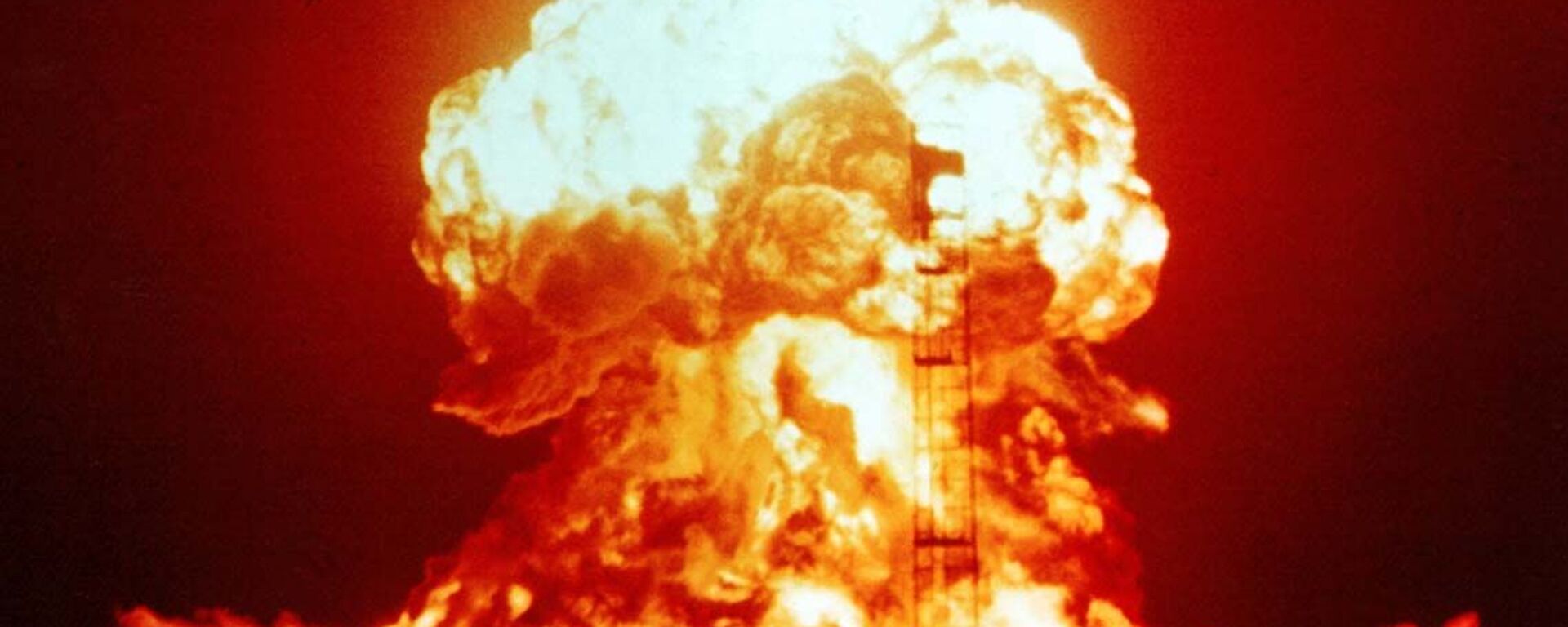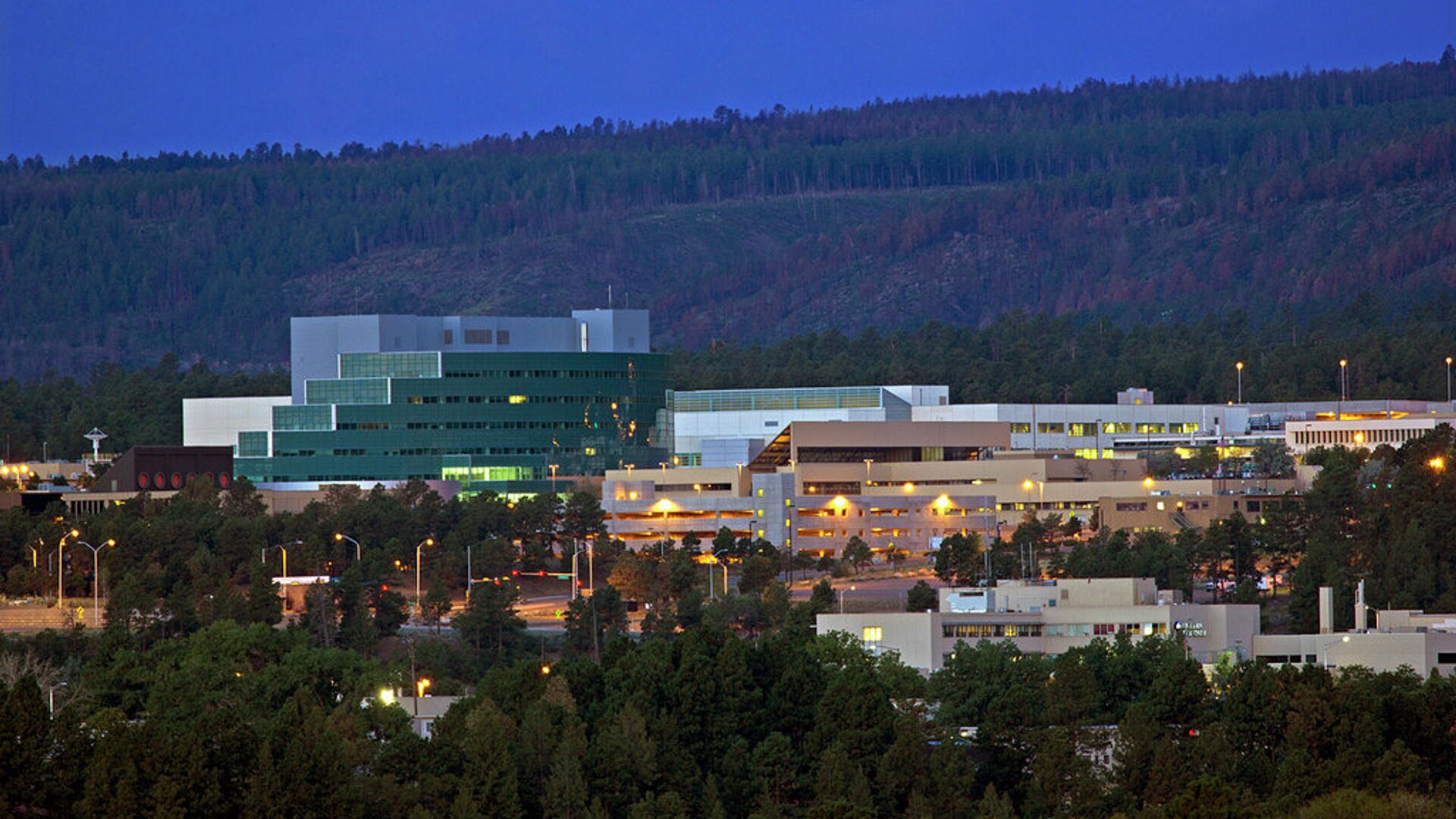https://sputnikglobe.com/20231007/us-moving-closer-to-developing-underground-nuclear-tests-without-explosions-1113995002.html
US Moving Closer to Developing Underground Nuclear Tests Without Explosions
US Moving Closer to Developing Underground Nuclear Tests Without Explosions
Sputnik International
Scientists tasked with ensuring the safety, reliability and effectiveness of the US nuclear arsenal say they are close to completing a facility that will help them test that.
2023-10-07T02:54+0000
2023-10-07T02:54+0000
2023-10-07T02:51+0000
military
lawrence livermore national laboratory
national nuclear security administration (nnsa)
new mexico
nevada
nuclear weapons
nuclear warheads
nuclear tests
https://cdn1.img.sputnikglobe.com/img/18242/65/182426506_0:92:1025:668_1920x0_80_0_0_27c34db9d752c6b90ad76b0c6c608e99.jpg
Scientists working on the 10-year, $1.8 billion Scorpius project say they are shipping key components needed to complete an underground test facility that will study the moments before a nuclear fission chain reaction that causes a nuclear explosion.Currently, researchers use other materials, including tungsten, lead, copper and gold to run tests, but plutonium has unique properties that might throw off the results. In particular, plutonium has seven stages that can be created in lab settings without exotic equipment.“At very high pressures and temperatures its behavior may not be very well represented by surrogates,” David Funk the vice president for Enhanced Capabilities for Subcritical Experiments at the Nevada National Security Site said.Other methods have been able to test plutonium’s “early implosion dynamic behavior” but the new facility in New Mexico will be able to test plutonium’s “late implosion dynamic behavior,” examining the moments just before a nuclear explosion would normally occur.Once completed, the facility will be roughly 300 feet long and be buried 1,000 feet underground.In the early years of the Atomic Age, nuclear tests were done above ground before eventually moving underground. In 1992, even underground testing of nuclear weapons was banned and the US nuclear arsenal hasn’t been tested since.Critics argue physical testing of nuclear materials is not necessary to ensure the weapons will function. Researchers at the Lawrence Livermore National Laboratory (LLNL), one of three laboratories tasked with ensuring the reliability, effectiveness and safety of the weapons, applied accelerated aging techniques to plutonium-239, the primary fissile material in nuclear warheads, and estimated they will “age gracefully” for the next 150 years. That study also assuaged concerns that helium bubbles caused by the decay of metals may affect the plutonium negatively.However, some scientists have argued there is only so much you can determine using simulations.But Jay Coghlan, of the watchdog group Nuclear Watch New Mexico, is not convinced the project is only designed to ensure the reliability of current weapons.He and other critics argued then that new designs of nuclear pits (which hold nuclear warheads) have drifted too far from weapons tested before the ban that are used to validate simulations. He called this "code drift" and said changes are likely to make the weapons less effective because of that.According to the National Nuclear Security Administration, the W87-1 warhead is being manufactured to replace the aging W78 warhead. The new nuclear pits are designed to accommodate the newer warhead. The new facility could be completed as early as 2027.
https://sputnikglobe.com/20230830/russian-ambassador-to-us-russia-will-not-be-first-to-resume-nuclear-testing-1112977341.html
new mexico
nevada
Sputnik International
feedback@sputniknews.com
+74956456601
MIA „Rossiya Segodnya“
2023
News
en_EN
Sputnik International
feedback@sputniknews.com
+74956456601
MIA „Rossiya Segodnya“
Sputnik International
feedback@sputniknews.com
+74956456601
MIA „Rossiya Segodnya“
nuclear testing, nuclear test ban, us nuclear arsenal aging, updates to nuclear weapons, w87-1
nuclear testing, nuclear test ban, us nuclear arsenal aging, updates to nuclear weapons, w87-1
US Moving Closer to Developing Underground Nuclear Tests Without Explosions
Scientists are one step closer to completing a project they say will help them determine the reliability of the US nuclear arsenal and help them better understand plutonium.
Scientists working on the 10-year, $1.8 billion Scorpius project say they are shipping key components needed to complete an underground test facility that will study the moments before a nuclear fission chain reaction that causes a nuclear explosion.
Currently, researchers use other materials, including tungsten, lead, copper and gold to run tests, but plutonium has unique properties that might throw off the results. In particular, plutonium has seven stages that can be created in lab settings without exotic equipment.
“At very high pressures and temperatures its behavior may not be very well represented by surrogates,” David Funk the vice president for Enhanced Capabilities for Subcritical Experiments at the Nevada National Security Site said.
Other methods have been able to test plutonium’s “early implosion dynamic behavior” but the new facility in New Mexico will be able to test plutonium’s “late implosion dynamic behavior,” examining the moments just before a nuclear explosion would normally occur.

30 August 2023, 03:46 GMT
Once completed, the facility will be roughly 300 feet long and be buried 1,000 feet underground.
In the early years of the Atomic Age, nuclear tests were done above ground before eventually moving underground. In 1992, even underground testing of nuclear weapons was banned and the US nuclear arsenal hasn’t been tested since.
Critics argue physical testing of nuclear materials is not necessary to ensure the weapons will function. Researchers at the Lawrence Livermore National Laboratory (LLNL), one of three laboratories tasked with ensuring the reliability, effectiveness and safety of the weapons, applied accelerated aging techniques to plutonium-239, the primary fissile material in nuclear warheads, and estimated they will “age gracefully” for the next 150 years. That study also assuaged concerns that helium bubbles caused by the decay of metals may affect the plutonium negatively.
However, some scientists have argued there is only so much you can determine using simulations.
“If you had a car in a garage for 30 to 50 years and one day you insert the ignition key, how confident are you that it will start?” Jon Custer, who leads the project for Sandia National Laboratories, another nuclear laboratory contracted by the US, asked. “That’s how old our nuclear deterrent is. It has been more than 30 years since we conducted an underground nuclear explosive test.”
But Jay Coghlan, of the watchdog group Nuclear Watch New Mexico, is not convinced the project is only designed to ensure the reliability of current weapons.
“All of this is about the future stockpile and future heavy modifications, if not outright new designs,” Coghlan said in 2020 when the project was at an earlier stage.
He and other critics argued then that new designs of nuclear pits (which hold nuclear warheads) have drifted too far from weapons tested before the ban that are used to validate simulations. He called this "code drift" and said changes are likely to make the weapons less effective because of that.
According to the National Nuclear Security Administration, the W87-1 warhead is being manufactured to replace the aging W78 warhead. The new nuclear pits are designed to accommodate the newer warhead.
The new facility could be completed as early as 2027.



